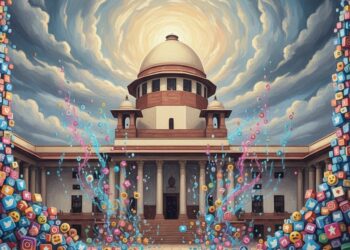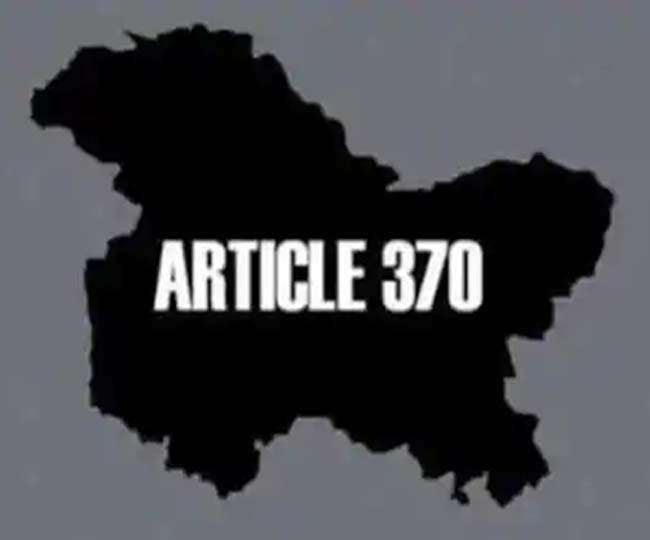Unhe raha gurez jis bewajah ke shor se;
Jamooriyat hai zinda un kehkahon ke zor se
Democracies are clamorous because people are noisy, and the senseless noises they make are generally not only of no consequence, but are also born of selfish motives in most cases while in some it’s plain malice at work. But, it is this baffling disorder that is the heart and lifeblood of a democracy.
It is the irregular, ugly rock that houses captivating statues waiting to be carved out. Destroy the rock, and the statues are gone forever. The lovers of order, discipline and propriety hate this side of democracy that is at its starkest in the way people exercise the constitutionally guaranteed Fundamental Right to Freedom of Speech and Expression. We talk more nonsense than sense, and our media feels no need for and makes no effort to turn into grandmotherly moralizer. And the reasons for this self-restraint is no nobler than commercial expediency in most cases. Our media believes that people must get what they ‘want’ and not what they ‘need’ because what they ‘want’ is what they ‘need’, and the people are best judges of their ‘needs’ and ‘wants’. They keep it simple, and carry on attending to ‘public demand’. Yes, farmers are dying. Yes, there is poverty. Yes, there is corruption. But then, Aishwarya delivered a baby ‘valiantly’, and she with her little one makes a better picture than any pictorial depiction of poverty or corruption. Beauty sells better than problems, and also better than Shahrukh for now. Why depress people when there are mood-elevators around. Call it ‘chocolate news’, if you like.
Newspapers have started selling spicy news and bikini girls while 24-hour TV channels sell anything from mysterious ghosts and Indian exorcists to the end-of-the-world prophecies and baby-in-the-ditch dramas. News is entertainment. It no longer is the useful information it once used to be. And that’s perhaps no such a good news.
The real question, however, is whether it is really as bad as it seems at first glance or there is a bright side to it. Has the Indian media really stretched, strained and taken for granted the constitutional guarantees to such an extent as to require an independent, regulatory watchdog keeping vigil over its activities? Has self-regulation really failed as Justice Katju feels? And when did that happen exactly? Is it time to bring electronic media under Press Council of India, like the print media? If not, what makes it eligible for a different treatment? And why is electronic media so uncomfortable with the talk of regulation by an independent body when Press Council of India has done nothing to curb the freedom of press, and the Judiciary has fiercely defended free speech against all encroachments at all times?
The issue of regulating electronic media by expanding the reach of the Press Council of India to bring electronic media within its purview came to the fore when former Supreme Court judge Justice Markandey Katju took over as Chairman, Press Council of India (PCI), and pushed for more effective powers and wider reach for the PCI so that the Council could monitor and regulate the media better. Justice Katju wrote to the Prime Minister regarding it, shared his views on the issue during several TV interviews and also reduced them in writing in an article published in The Hindu. A few days later, he also issued a clarification to make his point clearer.
Justice Katju appears unhappy over Indian media’s failure to bring into sharper focus the socio-economic problems of the people, and bemoans its overindulgence in things as inconsequential as private lives of the film stars, fashion trends and cricket milestones. But then, different TV channels and the different programs they broadcast have different audiences. One can easily watch serious news and heated debates on current issues of national significance on one channel, soap operas on the other, and cricket on the third. There is no reason or justification to interfere with individual preferences in this regard in any manner whatsoever.
 Justice Katju’s comparison of the press during the Age of Enlightenment in Europe with the Indian media of the present day, too, is far-fetched because the societies under comparison are too far apart in time, culture and developmental stages to be compared. Back then, the press controlled the information that went to the people whereas today it is the people who decide what deserves their attention. There are dedicated business channels, sports channels, food channels, cricket channels, movie channels and also news channels. One watches what one chooses to watch, and one has every right to so choose.
Justice Katju’s comparison of the press during the Age of Enlightenment in Europe with the Indian media of the present day, too, is far-fetched because the societies under comparison are too far apart in time, culture and developmental stages to be compared. Back then, the press controlled the information that went to the people whereas today it is the people who decide what deserves their attention. There are dedicated business channels, sports channels, food channels, cricket channels, movie channels and also news channels. One watches what one chooses to watch, and one has every right to so choose.
Justice Katju laments in one of the articles mentioned above:
Many T.V. channels show astrology. Astrology is not to be confused with astronomy. While astronomy is a science, astrology is pure superstition and humbug… No doubt most people in our country believe in astrology, but that is because their mental level is very low. The media should try to bring up that level, rather than to descend to it and perpetuate it.
By logical extension of the rationale above, anybody who believes in anything other than ‘scientific facts’ or ‘scientifically established truths’ has ‘low mental level’. Scientifically, Pluto was a planet for decades; it no longer is. Scientifically, there was no vacuum in space; then, scientifically, the existence of vacuum was confirmed, and then again the position was reversed to no-vacuum status, scientifically. And we are quite prepared for another ‘scientific’ reversal in this regard. The fact is that even ‘scientific facts’ are not ‘facts’, strictly speaking, but are ‘scientific beliefs’.
Also, the most widely accepted unscientific and irrational belief is the belief in the existence of God. The belief is not only scientifically unverified, but is also considered ‘unverifiable’. Are we prepared to say that all those who believe in God have ‘low mental level’?
Justice Katju believes that among the media person “the majority consists of people who do not seem to have the desire to serve the public interest.” Shouldn’t the ‘public’ be allowed to determine ‘public interest’? Justice Katju further says:
To remedy this defect in the media I have done two things (1) I propose to have regular meetings with the media (including electronic media) every two months or so. These will not be regular meetings of the entire Press Council, but informal get-togethers where we will discuss issues relating to the media and try to resolve them in the democratic way, that is, by discussion, consultation and dialogue. I believe 90% problems can be resolved in this way (2) In extreme cases, where a section of the media proves incorrigible despite trying the democratic method mentioned above, harsher measures may be required.
Now, the proposed arrangement sounds much like a state-run ‘evening tutorials’ for the media with the provision that if the media fails to learn its lessons well enough, the state might choose to summon the stick. This also seems to be an attempt at forced homogenization of media’s approach to news and other content, which is nothing short of interfering with the constitutionally guaranteed Right to Freedom of Speech and Expression. If media is wary of such measures, it’s not without justification.
Having said that, Justice Katju’s insistence on putting together a mechanism to check unethical practices in journalism by punishing the erring is not without merit. It is high time we had the legal framework to deal with those who use the power and influence of the Fourth Estate to pursue selfish and immoral personal goals. But it must be a negative, punitive check, and must not be directional in nature so that the freedom of press stands effectively protected against state interference or influence.
As for the failure of the self-regulation, it is not clear how and when did it fail. True, scandals like Radia Tapes and Paid News are alarming, but they do not necessarily indicate a failure of ‘self-regulation’ because even if there was an external regulatory authority, such scandals could have taken place, for the mere existence of a functioning regulatory authority does not guarantee desired results. For instance, Central Board of Film Certification or the Censor Board is such a regulatory authority, and it did nothing to prevent song videos like ‘DK Bose’ (Delhi Belly), and, more recently, ‘Jhak Maar ke’ (Desi Boyz) with John Abraham’s indisputably obscene gestures from not only being part of the movies, but also being cleared for television promos for universal viewership.
Free Speech is a right too precious to be lightly meddled with. In this regard, it is worth noting what Chief Justice Patanjali Shastri said inRomesh Thappar v. State of Madras, AIR 1950 SC 124:
Freedom of speech and of the press lay at the foundation of all democratic organisations, for without free political discussion no public education, so essential for the proper functioning of the process of popular government, is possible. A freedom of such amplitude might involve risks of abuse. But the framers of the Constitution may well have reflected with Madison, who was the leading spirit in the preparation of the First Amendment of the Federal Constitution, that it is better to leave a few noxious branches to their luxuriant growth than by pruning them away, to injure the vigour of those yielding the proper fruits.





